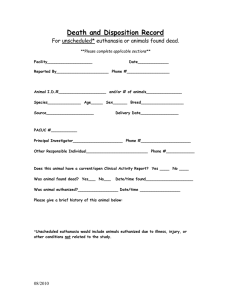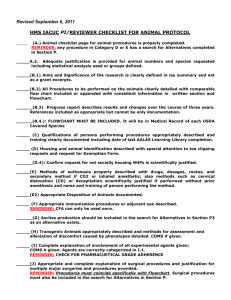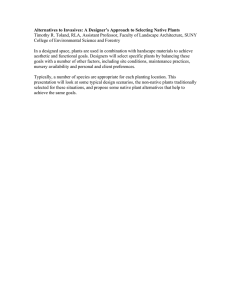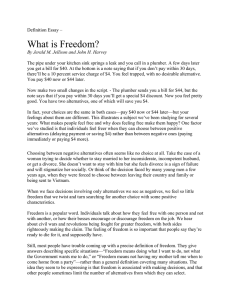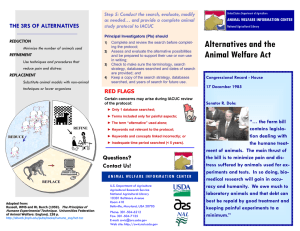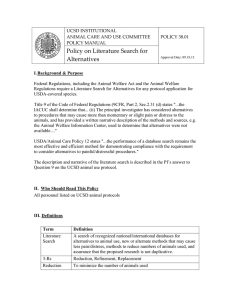UWSP IACUC Notes to assist in... Oct 2006
advertisement
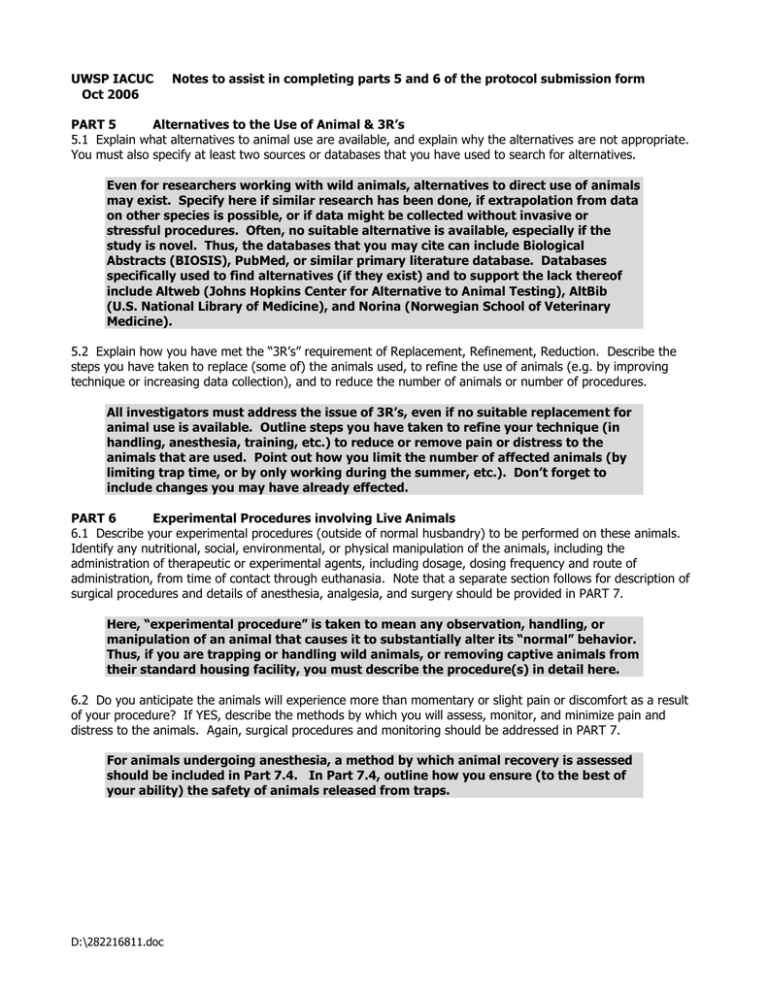
UWSP IACUC Oct 2006 Notes to assist in completing parts 5 and 6 of the protocol submission form PART 5 Alternatives to the Use of Animal & 3R’s 5.1 Explain what alternatives to animal use are available, and explain why the alternatives are not appropriate. You must also specify at least two sources or databases that you have used to search for alternatives. Even for researchers working with wild animals, alternatives to direct use of animals may exist. Specify here if similar research has been done, if extrapolation from data on other species is possible, or if data might be collected without invasive or stressful procedures. Often, no suitable alternative is available, especially if the study is novel. Thus, the databases that you may cite can include Biological Abstracts (BIOSIS), PubMed, or similar primary literature database. Databases specifically used to find alternatives (if they exist) and to support the lack thereof include Altweb (Johns Hopkins Center for Alternative to Animal Testing), AltBib (U.S. National Library of Medicine), and Norina (Norwegian School of Veterinary Medicine). 5.2 Explain how you have met the “3R’s” requirement of Replacement, Refinement, Reduction. Describe the steps you have taken to replace (some of) the animals used, to refine the use of animals (e.g. by improving technique or increasing data collection), and to reduce the number of animals or number of procedures. All investigators must address the issue of 3R’s, even if no suitable replacement for animal use is available. Outline steps you have taken to refine your technique (in handling, anesthesia, training, etc.) to reduce or remove pain or distress to the animals that are used. Point out how you limit the number of affected animals (by limiting trap time, or by only working during the summer, etc.). Don’t forget to include changes you may have already effected. PART 6 Experimental Procedures involving Live Animals 6.1 Describe your experimental procedures (outside of normal husbandry) to be performed on these animals. Identify any nutritional, social, environmental, or physical manipulation of the animals, including the administration of therapeutic or experimental agents, including dosage, dosing frequency and route of administration, from time of contact through euthanasia. Note that a separate section follows for description of surgical procedures and details of anesthesia, analgesia, and surgery should be provided in PART 7. Here, “experimental procedure” is taken to mean any observation, handling, or manipulation of an animal that causes it to substantially alter its “normal” behavior. Thus, if you are trapping or handling wild animals, or removing captive animals from their standard housing facility, you must describe the procedure(s) in detail here. 6.2 Do you anticipate the animals will experience more than momentary or slight pain or discomfort as a result of your procedure? If YES, describe the methods by which you will assess, monitor, and minimize pain and distress to the animals. Again, surgical procedures and monitoring should be addressed in PART 7. For animals undergoing anesthesia, a method by which animal recovery is assessed should be included in Part 7.4. In Part 7.4, outline how you ensure (to the best of your ability) the safety of animals released from traps. D:\282216811.doc 6.3 Describe any potential adverse effects of the experimental procedures and how each abnormal or adverse effect will be managed. Describe the conditions, criteria, and methods that would lead to the removal of an animal from the study (e.g. animals with uncontrolled infections would be euthanized). Here, address the potential disasters or possible bad outcomes, even if they have never occurred. Outline how you would handle minor and major injuries or trauma (from a broken leg in a trap, or a hypothermic squirrel, or an accidentally dropped frog, for example). Also include here what method of euthanasia you would employ, and specify under what conditions euthanasia of an animal might be required to end pain or distress that could not be alleviated otherwise. 6.4 Outline the final disposition of the animals – what will happen to the animals at the end of the study? For captive animals, please provide a method for caring for elderly, sick, or distressed animals that cannot be treated. For all euthanized animals, consider providing tissues or cadavers to the museum and other investigators for use. D:\282216811.doc
